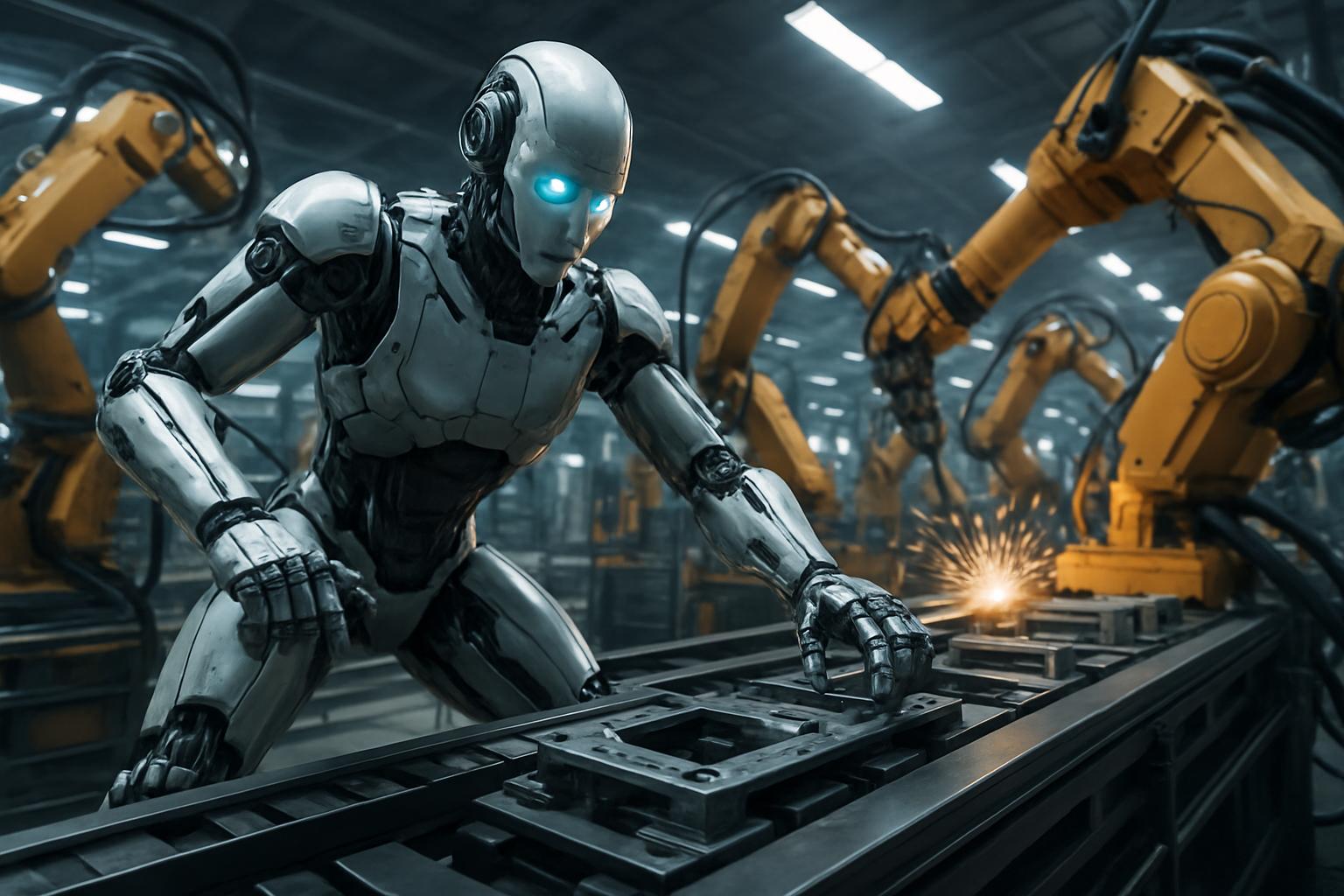
AI CERTS
5 hours ago
Tesla Optimus Gen 3 Spurs Humanoid Robotics Development Leap
Optimus Gen 3, also referenced as V3, is promised to appear "so real you’ll need to poke it," according to Musk. Consequently, Wall Street is recalibrating models to account for massive humanoid robotics development revenues. Meanwhile, roboticists stress that dexterity, safety, and cost remain formidable barriers.

This article unpacks the timeline, production strategy, market context, and engineering hurdles surrounding the impending reveal. Additionally, we examine investor expectations and talent opportunities emerging from Tesla’s latest AI gamble.
Confirmed Optimus Timeline Milestone
Tesla’s October 22 statement provides the clearest schedule yet. Musk said, "We look forward to unveiling Optimus V3 probably in Q1" before hinting at a February showcase. Therefore, analysts mark early spring 2026 as the decisive public test for Tesla’s humanoid robotics development roadmap.
First-generation production lines are already being installed inside Fremont and Giga Texas, according to the investor deck. Consequently, internal pilots will deploy several thousand robots across Tesla shops during 2025. Those pilots set the stage for later 1M production capacity aspirations.
The timeline now feels concrete, yet execution risks loom. However, scale ambitions deserve separate scrutiny, addressed next.
Tesla Scale Ambitions Stated
During the same call, Musk reiterated a path toward 1M production capacity within a few years. He framed this goal as essential for disrupting labor economics in factory automation worldwide. Moreover, management floated a long-term $30K price target for each unit sold externally.
Achieving that $30K price target demands ruthless cost engineering and supply synergy. Therefore, Tesla plans to leverage vehicle drivetrain experience to standardize actuators and cut electronics expenses. Consequently, executives claim cost-of-goods could fall near $20K at scale, preserving healthy margins.
In contrast, suppliers warn that sourcing 10K components per robot complicates 1M production capacity timetables. Nevertheless, Tesla argues vertical integration will streamline factory automation bottlenecks. The company says few rivals possess similar combined AI, hardware, and manufacturing footprints.
Ambition alone will not solder actuators or certify safety. Sustainable humanoid robotics development hinges on disciplined parts logistics. Next, we examine engineering obstacles threatening these dreams.
Critical Manufacturing Hurdles Ahead
Building a walking machine is easy compared with scaling to millions. Rodney Brooks recently labeled the excitement a "humanoid robot bubble" and cited unsolved dexterity challenges. Furthermore, high-bandwidth touch sensing and fail-safe joints remain research projects, not commoditized modules.
Every Optimus contains roughly 10K components, many custom to Tesla’s design. Subsequently, a single late supplier can halt an entire factory automation cell. Therefore, Musk conceded the ramp "will be limited by the slowest part" during Q&A.
Battery density, thermal management, and fall resilience also need robust validation before humanoid robotics development matures. Nevertheless, the upcoming prototype should clarify which gaps remain. These hurdles contextualize revenue forecasts discussed next.
Global Market Forecast Variances
Market researchers cannot agree on potential demand. Grand View Research pegs humanoid robot sales at $4.04 billion by 2030, a conservative trajectory. In contrast, ABI Research models multibillion-dollar revenue earlier, assuming rapid factory automation adoption.
- Q3 2025 revenue: $28.095 billion, up 12% YoY
- Free cash flow: $3.99 billion
- Cash and investments: $41 billion
- Vehicle deliveries: 497,099 units
Tesla’s prophecy of 1M production capacity dwarfs both forecasts by orders of magnitude. Moreover, management touts a long-run $30K price target, implying $30 billion yearly hardware revenue alone. Consequently, bulls see Optimus eclipsing Tesla’s vehicle business over time.
Skeptics respond that price, volume, and regulation will throttle uptake. Nevertheless, even conservative scenarios point to double-digit growth for humanoid robotics development vendors. The next section details how experts evaluate feasibility.
Independent Expert Skepticism Mounts
Rodney Brooks argues hands remain the Achilles’ heel. He notes decades of research have not yielded affordable, reliable manipulation for 10K components systems. Additionally, Brooks questions whether Musk’s $30K price target covers warranty costs and liability.
Other academics highlight missing certification pathways for surgical or public interaction tasks. Meanwhile, industrial safety authorities will review fall mitigation, emergency stop latency, and cybersecurity controls. Therefore, deployment outside Tesla plants could trail internal rollout by several years.
Expert caution tempers excitement for humanoid robotics development but does not erase potential. Subsequently, we explore how success may reshape adjacent sectors.
Broader Strategic Industry Impact
If Tesla meets schedule, Optimus could redefine labor allocation across automotive, logistics, and electronics manufacturing. Consequently, factories may redesign lines for mixed human-robot teams, similar to early collaborative robot deployments. Consultants already model productivity gains of 20-40 percent when 1M production capacity robots augment staff.
Moreover, a sustainable $30K price target could undercut many traditional industrial automation solutions. Startups like Figure AI and Apptronik are racing to secure partnerships before Tesla scales. In contrast, legacy robotics firms emphasize niche specialization rather than volume plays.
Government agencies will likely craft new guidelines for humanoid robotics development in shared spaces. Nevertheless, clear economic incentives could accelerate regulatory harmonization across regions. Upskilling imperatives emerge, examined next.
Essential Upskilling For Engineers
Robotics engineers and operations managers must refresh skills ahead of mass humanoid robotics development adoption. Additionally, cross-disciplinary competence in AI, safety, and mechanics will drive career mobility. Professionals can enhance their expertise with the AI Robotics Certification endorsed by industry groups.
Moreover, maintenance technicians will need fluency with 10K components diagnostics and predictive analytics. Training programs are surfacing at partner colleges and within Tesla’s own academies. Consequently, early adopters may secure leadership roles in factory automation rollouts.
- AI model tuning
- Safety certification protocols
- Actuator maintenance
- Supply chain analytics
Skill pipelines must mature alongside technology. Finally, we summarize the landscape and next steps.
Tesla’s Optimus Gen 3 timeline crystallizes a pivotal year for humanoid robotics development. The company targets 1M production capacity, a $30K price target, and seamless factory automation integration. However, 10K components complexity, safety certifications, and uncertain demand could stretch schedules.
Nevertheless, if Tesla executes, global manufacturing dynamics may shift dramatically. Therefore, professionals should monitor prototype demonstrations and pursue advanced learning opportunities. Explore certifications today to prepare for tomorrow’s intelligent production lines.



